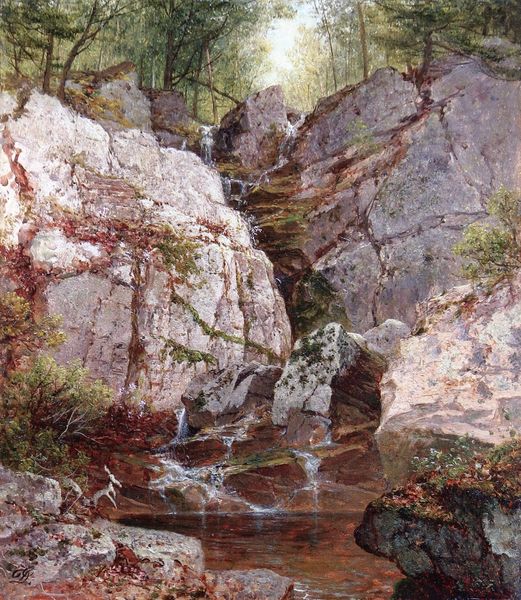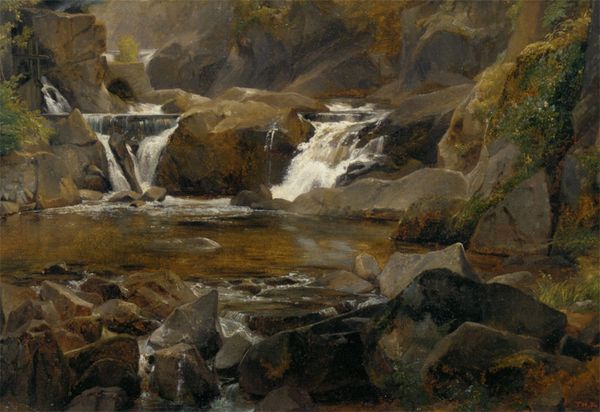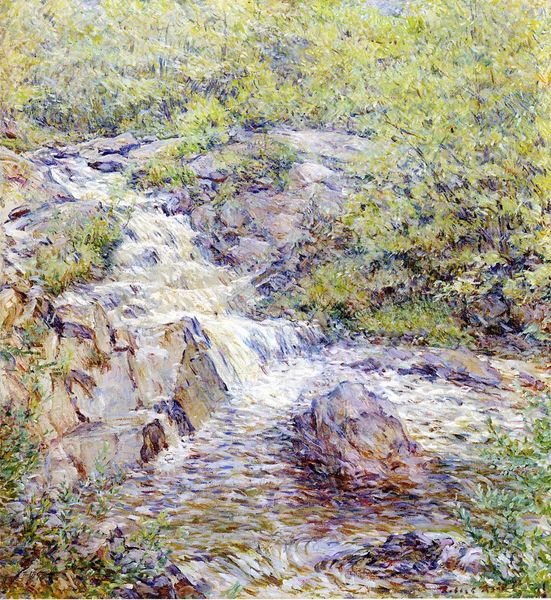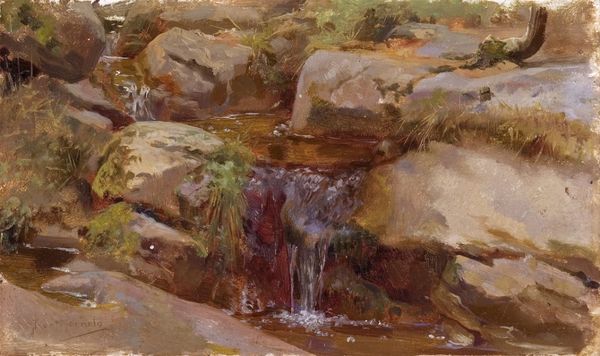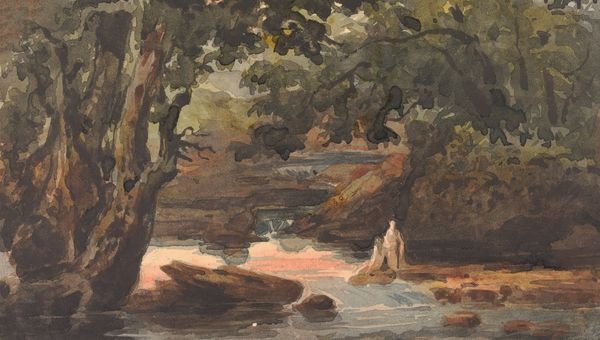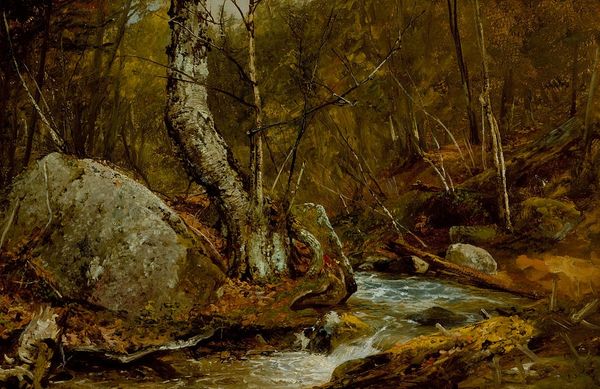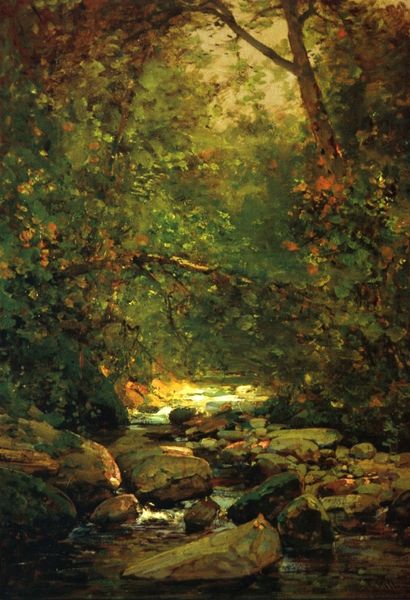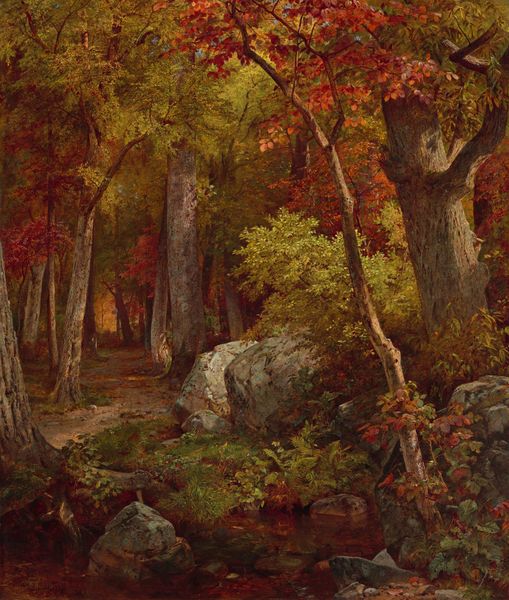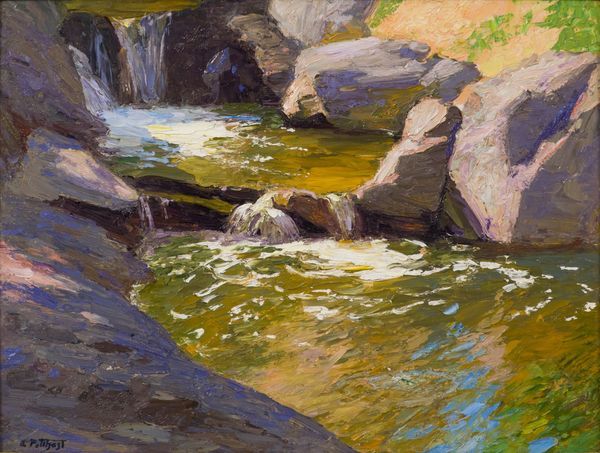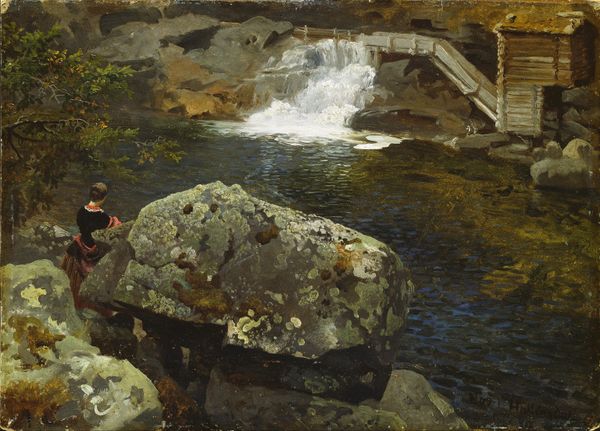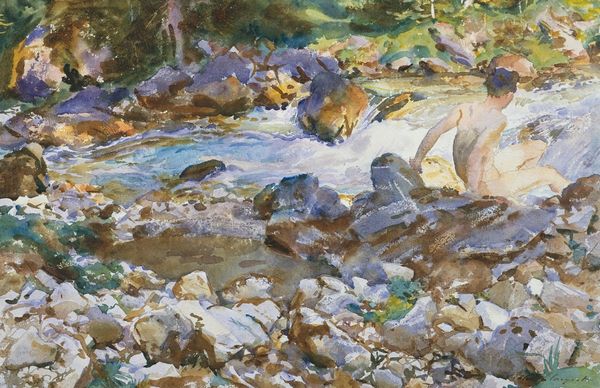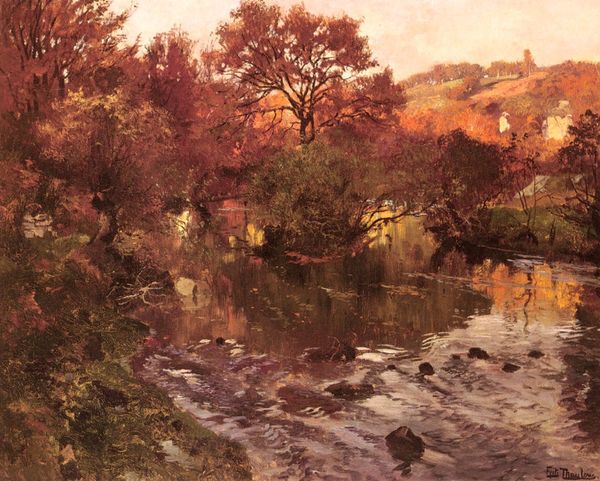
Dimensions: sheet: 24.2 × 19.2 cm (9 1/2 × 7 9/16 in.)
Copyright: National Gallery of Art: CC0 1.0
Editor: Here we have John George Sowerby’s “The Kingfisher’s Haunt,” painted around the 1890s, a watercolor that depicts a very lush and intimate scene. The earth tones give it such a warm feeling. What are your immediate impressions, and how do you interpret this work through its formal qualities? Curator: This piece immediately strikes me with its intense use of texture and color to create depth. Note the artist’s meticulous layering, especially how the brushstrokes mimic the movement of water and the density of the foliage. How does this compositional strategy impact the viewer's perception? Editor: It's almost like you are drawn into the scene! Do you see a connection to the Pre-Raphaelite movement in Sowerby’s work? Curator: Precisely. The level of detail applied to natural forms places it within the detailed realism favored by the Pre-Raphaelites. Yet, unlike much of their figurative work, Sowerby gives us pure landscape. Also, examine the strategic use of light; how does it sculpt form and create contrast? Editor: I notice how the light catches the water’s surface and illuminates the mossy rocks. It's a really striking contrast. What about that kingfisher though? Curator: Yes, the kingfisher provides a focal point, its vibrant color serving to enhance the earth-toned harmony of the rest of the canvas. The small but vivid bird punctuates the stillness with an alertness that is a perfect complement to the composition as a whole. Do you find that Sowerby’s close observation results in something that transcends mere description? Editor: I do. Looking at the painting now, I appreciate Sowerby’s craftsmanship so much more, especially how he directs the eye through color and texture. Curator: Indeed. By analyzing elements such as texture, colour, and composition, we uncover not just what is depicted, but how Sowerby constructs a sensory experience.
Comments
No comments
Be the first to comment and join the conversation on the ultimate creative platform.
